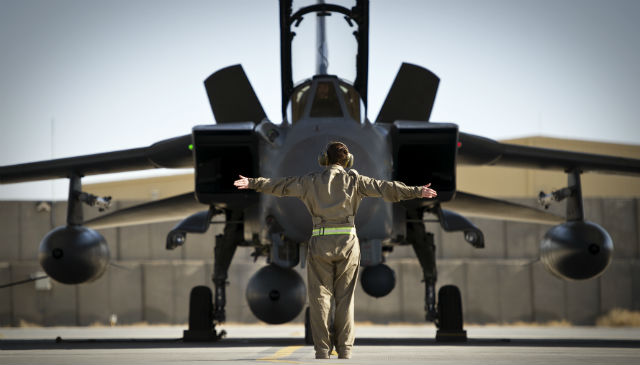Finmeccanica is hopeful that the Royal Air Force will be the launch customer for its BriteCloud active decoy, following the completion of a series of tests of the system onboard the service’s Panavia Tornado GR4 combat aircraft.
Initial evaluation testing was carried out in the USA at dedicated radio-frequency (RF) facilities in October, the first test of the expendable active decoy from the Tornado.
“Now that we've done successful tests on the Tornado we're working hard towards securing our first order for operational deployment,” Jon McCullagh, campaign manager for electronic warfare at Finmeccanica Airborne and Space Systems, tells Flightglobal.
“We're in talks with the UK and are hoping that [it] will be the first nation to carry the BriteCloud into operations.”
A number of BriteCloud systems were purchased by the RAF to perform the testing, during which the decoy – which simulates the RF signature of an aircraft to deter threats – performed to plan and managed to automatically detect radar threats and jam them.
BriteCloud is a self-contained digital radio frequency memory jammer that is carried in a 55mm chaff and flare dispenser. It detects and identifies RF emissions and, on finding a match, applies algorithms and emits a deception signal.

Crown Copyright
“No further trials have taken place with the UK, as the October tests were deemed successful, although it is likely that further trials will take place to verify and extend the operational advantage provided by BriteCloud,” McCullagh adds.
When the decoy was launched in 2013, Saab committed to offering it as a protection system for its Gripen fighter, but so far none have been purchased. The new Gripen E/NG will also be able to carry the decoy.
McCullagh says the ease of integration and the standard flare dispenser fit means the potential customer base is extensive, and the system is in full production, ready for a launch customer.
Source: FlightGlobal.com
















